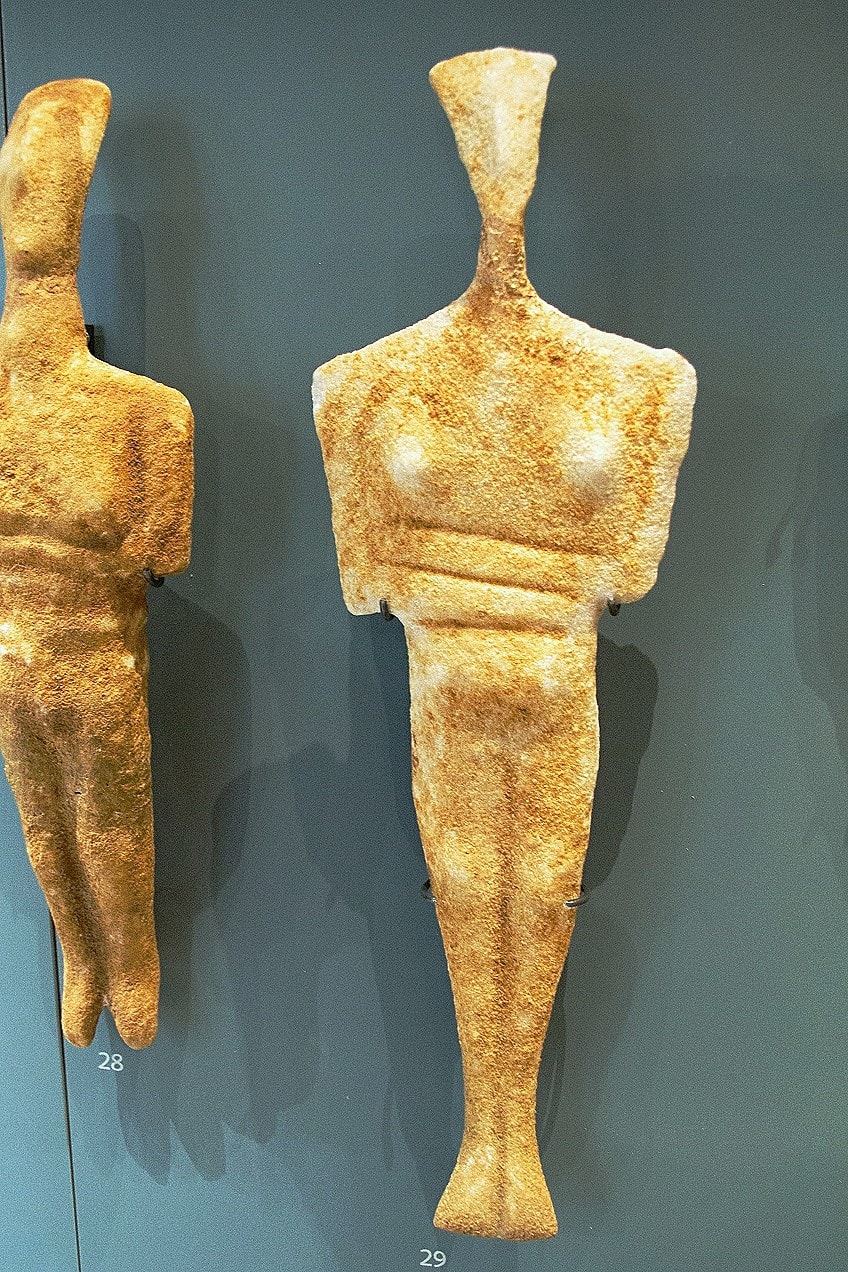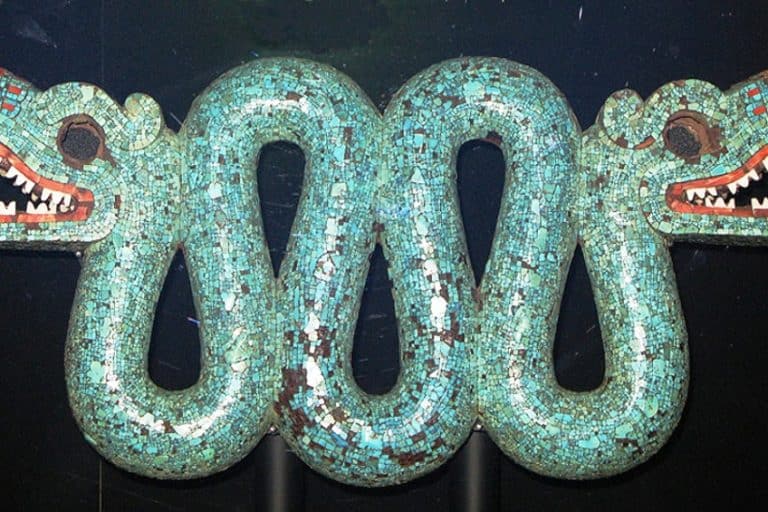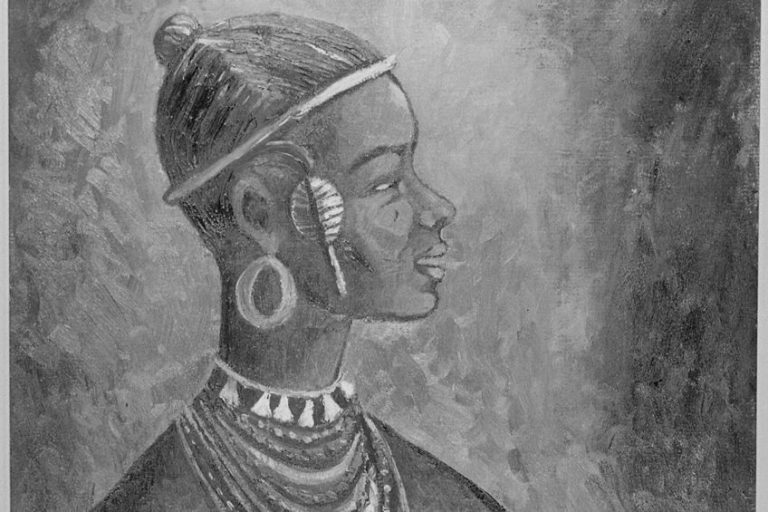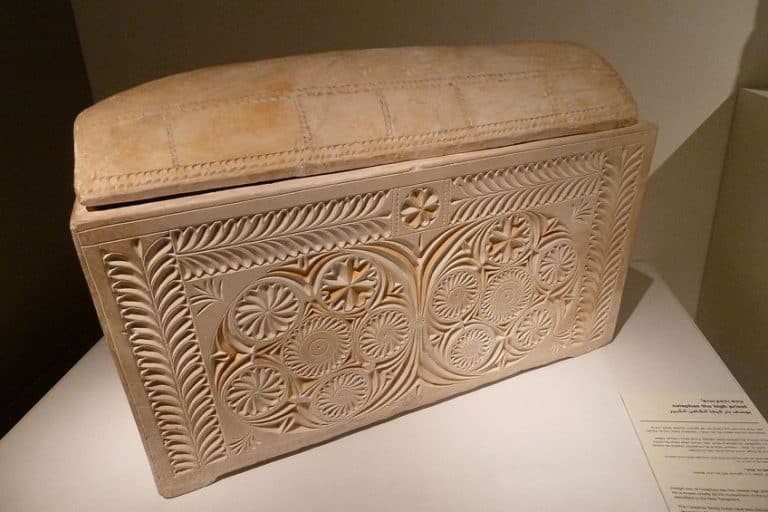Cycladic Art – A Look at the Marble Figures and Sculptures of This Era
From 3300 to 1100 BCE, the ancient Cycladic civilization flourished on the Aegean Sea’s islands. The Cycladic civilization was one of the three great Aegean cultures, which also included Mycenaean Greece and the Minoan civilization. As a result, Cycladic art is one of the three major groups of Aegean art. The most well-known surviving Cycladic sculptures were the marble figures, which were often a single complete female figurine with arms crossed on the front.
Early Cycladic Art
There are three phases of early Cycladic art. The artwork is not limited to one of these eras, and in some instances, it represents several of the Cycladic islands. The artwork of EC I is most visible on the islands of Antiparos, Paros, and Amorgos, whereas EC II is most visible on Syros and EC III on Melos.
Exploring Cycladic Art
Aside from a finely defined nose, the faces are devoid of any other facial features, however, some Cycladic figures have indications that they were once painted. A significant number of them are known, but regrettably, most were illegally removed from their unknown archaeological setting, which seems to represent a burial.
Almost all evidence of Neolithic art in the Cyclades comes from the archaeological site at Saliagos off the coast of Antiparos. This era’s pottery is identical to that of the Greek mainland and Crete. A characteristic form is a vessel on a high pedestal akin to a kind found on the mainland during the late Neolithic period.
Cycladic Sculptures
The most well-known artworks of this time were the marble figures known as figurines or idols, but neither title is quite exact: the former implies a religious role that scholars disagree on, and the latter does not adequately relate to the biggest figures, which are almost life-size.
These marble figures have been found spread around the Aegean, indicating that they were prominent among the inhabitants of mainland Greece and Crete.
The most well-known examples of these individuals are two musicians, one a harpist and the other a piper. These musicians, who lived about 2500 BCE, are frequently referred to as “the oldest extant Aegean musicians.” The preponderance of these Cycladic figures, on the other hand, are highly stylized portrayals of the feminine human form, with a flat, geometric appearance that bears a remarkable resemblance to contemporary art.

Yet, there is an indication that the Cycladic sculptures were initially vividly colored, thus this may be a contemporary mistake. The bulk of the figures are female, naked, with arms crossed over the tummy. Most authors who have examined these objects from a psychological or anthropological standpoint have believed that they are emblematic of a Great Deity of Nature, following in the footsteps of Neolithic female representations such as the Venus of Willendorf (25,000 BP).
Although some archeologists might agree, this view is not widely accepted by archeologists, who disagree with their relevance. They have been regarded as deity idols, representations of mortality, baby dolls, and other items.

According to one expert, they were “more than dolls and definitely less than holy idols.” Archeological evidence does not support claims that these pictures were idols in the literal sense—cult artifacts that were the center of ritual devotion. The archeological evidence suggests that these pictures were often utilized in funeral rituals, as they have all been discovered in tombs.
Nonetheless, at least some of them exhibit apparent indications of repair, showing that they were artifacts cherished by the deceased throughout their lifetime and were not created expressly for burial. Larger figures were occasionally cut apart such that just a portion of them was buried, a phenomenon that has no explanation. These figurines appear to have been buried alongside both women and men.
These Cycladic figures were not discovered in every burial. Even though the Cycladic sculptures are most commonly seen lying on their backs in burial sites, larger ones could have been placed in temples or dwellings.
Early Cycladic I
Plastiras, Pelos, and Louros were the most prominent early groups of the Grotta–Pelos civilization. Pelos figurines are of the schematic variety. The Plastiras type is composed of both males and girls standing in a standing stance with a head and face; the representation is lifelike yet curiously stylized. The Louros kind is considered part of a transitional phase, as it has both naturalistic as well as schematic aspects.
Schematic figures are more prevalent and have a relatively flat profile, basic outlines, and no clearly defined head. Naturalistic figures are petite, with elongated necks, sharp upper bodies, and powerful legs. The Pelos-type figures differ from most other Cycladic figures in that the sex of the majority of them is unknown. The “violin”-shaped Pelos-type Cycladic figures are the most well-known. These figurines have an extended head, no legs, and a violin-shaped torso.
One “violin” figurine includes arms under the bosom, and a pubic triangle, which might depict a fertility deity. However, because not all of the figurines possess these traits, no definitive conclusion can be reached at this time.
The Plastiras variety is an early form of Cycladic figures, named for the graveyard where they were discovered on the Greek island of Paros. The figures maintain the violin-like form, attitude, and folded arm configuration of their forefathers, but differ in significant ways. The Plastiras form of the Cycladic figure is the most lifelike, with exaggerated dimensions.

An ovoid head with sculpted facial features, notably the ears, stands atop an extended neck that often accounts for one-third of the overall height of the figure. The legs were cut independently over their whole length, which frequently resulted in breakages. The pubic region is delineated by an incision on female figurines, and the breasts are sculpted. Male depictions differ in structure. However, they are notable for having smaller hips and carved images of male genital organs.
The figurines are normally little, no greater than thirty centimeters in height, and are unable to stand on their own due to the pointed feet. Surviving figures have been sculpted from marble, although others believe they may have also been sculpted from wood. The Louros kind is a form of Cycladic figurine from the Bronze Age’s Early Cycladic I era. The Louros type has featureless features, a long neck, and a basic torso with attenuated shoulders that tend to stretch over the hips in breadth, blending the realistic and conceptual methods of earlier figure types.
The legs are precisely formed yet separated no further than the mid-calves. Despite the absence of breasts, figures of this kind are nonetheless indicative of the feminine form and often retain indications of a sculpted pubic triangle.
Early Cycladic II
The Kapsala kind is a Cycladic figure from the Early Cycladic II era. This variation is frequently assumed to predate or overlap in time with the conventional Spedos variation of figures. The arms are positioned far lower in the right-below-left folded posture in Kapsala figurines, and the faces are devoid of carved characteristics other than the nose and sometimes the ears. Kapsala figurines are slim, particularly in the legs, which are much lengthier and lack the robust musculature implied by older versions of the sculptures.
The shoulders and hips are also significantly thinner, and the figures themselves are exceedingly little, seldom measuring more than 30 centimeters in length. Evidence reveals that, rather than carving characteristics such as the eyes and pubic triangle, paint is now commonly utilized to demarcate them. One distinguishing feature of the Kapsala variation is that some figures appear pregnant, with protruding tummies and lines painted across the belly. The folded-arm stance is the most distinguishing element of the Kapsala variation, as it is of other figures from the Early Cycladic II era.
The most frequent form of Cycladic figure is the Spedos, titled after an early Cycladic burial site situated on Naxos. It has the most widespread distribution in the Cyclades and worldwide, as well as the longest lifespan. The collection as a whole contains figures ranging in size from 8 cm miniatures to 1.5 m gigantic sculptures.

Spedos figurines are often elongated thin feminine shapes with folded arms. They have U-shaped heads and a deeply carved split between their legs. The Dokathismata kind is an end-of-Early Cycladic II Bronze Age Cycladic sculpture.
The Dokathismata figures have broad, angular shoulders and a linear profile, which evolved from the older Spedos type. Dokathismata figures are the most stylistic of the folded-arm characters, with a long, graceful shape that has a strong sense of geometry, particularly in the head, which has an essentially triangular shape. In comparison to earlier variations, these figurines were fashioned more conservatively, with a narrow leg cleft and attached feet. Despite this, the figurines were rather weak and easily broken. The Dokathismata figurines also feature the reappearance of a pubic triangle.
The Chalandriani variation is a form of figurine which could be found at the close of the Bronze Age’s Early Cycladic II phase. These figures, named after the cemetery on the Greek island of Syros where they were discovered, are stylistically comparable to the Dokathismata kind that came before them.

Yet, Chalandriani figures have a more truncated appearance, with the limbs extremely near to the pubic area and the leg is only marked by a shallow indentation. The rigorous right-below-left pattern observed in prior figures seems to have eased in the Chalandriani variation since some statues have reversed arms or even abandoned the folded posture for one or both arms.
The prior figures’ reclining stance is also called into question, as the feet are not always sloped and the legs are fairly stiff. The shoulders were enlarged even more from the Dokathismata variant and were extremely vulnerable to injury since the upper shoulders and arms are also the sculpture’s thinnest point.
The heads are shaped like a shiel or triangle, with almost no facial characteristics aside from a large nose, and are joined to the body by a triangular-shaped collar. Certain Chalandriani figurines, like those of the Dokathismata kind, look to be pregnant. These figures are distinguished by their dramatic and exaggerated depiction of the shoulders and arms.
Cycladic Pottery
The local clay was tough for craftsmen to handle, and the pottery, plates, and vases produced during this period are rarely above poor. The aptly titled ‘frying pans,’ which appeared on Syros in the EC II era, are significant.
These are spherical ornamented disks that were possibly employed as fertility charms or mirrors rather than for cooking. There were also several zoological figures and ship-themed objects discovered. Aside from these, several types of utilitarian pottery have been discovered.

All pottery from the early Cycladic civilization was manufactured by hand and was mainly black or reddish, however, earthenware of a pale buff tint has also been discovered. Cylindrical containers, known as pyxides, and jars are the most popular forms. They are crudely built, with strong walls and eroding faults, yet they occasionally contain naturalistic motifs evocative of the Aegean islands’ sea-based lifestyle. There are also animal figures.
The most distinctive result of Cycladic culture is marble carving. Several 20th- and 21st-century artists, including Amedeo Modigliani, Constantin Brancusi, Barbara Hepworth, Alberto Giacometti, Henry Moore, and Ai Weiwei, have been affected by the abstract shapes of its figures. Although the virtually transparent whiteness of Cycladic marble figurines and vases appeals to modern viewers, its builders adored color and employed it extensively on these artifacts for both practical and symbolic purposes.
Frequently Asked Questions
Where Can I See Cycladic Art?
One of the best places to view this kind of art would be The Museum of Cycladic Art, which is home to one of the globe’s most comprehensive personal collections of Cycladic artwork, with noteworthy statues and vases, instruments, armaments, and earthenware from all stages of the unique Cycladic island society that thrived in the central Aegean all through the Early Bronze Age. The Cycladic Art Collection, which opened in 1986, is located on the first level of the fixed collections building. It contains a considerable number of high-quality marble figures and vases, some of the oldest bronze artifacts in Aegean pottery for everyday and ceremonial use, and other items, the majority of which are dated to the third millennium BC. The Vase Pigeon, which is prominently featured in various local magazines and newspapers, is thought to be the biggest and perhaps most perfect instance of poppet plate carved birds found to date.
What Is Cycladic Art?
The inhabitants of the Cyclades in the Early Bronze Age had a unique technique of burying their deceased, burying them in stone slab-lined trenches, sometimes two stories high. What is truly astonishing, though, is what is frequently discovered in these tombs: exquisitely sculpted small-scale marble statues, virtually all of which depict women and are known as Cycladic figurines. These were the first stylistically unified sculptural types to emerge in Europe, and they played an important role in Greece’s prehistoric art history. Cycladic figures also impacted a number of modern painters.
What Were Cycladic Sculptures Used For?
Since their unearthing in the late 19th century, the purpose and significance of these sculptures have remained a mystery. The fact that around 75% of early Cycladic archaeological finds were stolen in quest of figures to sell on the antique market hasn’t helped; looting eliminates the contextual knowledge that allows us to comprehend objects. Recent archaeological digs on the island of Keros, on the other hand, have yielded some intriguing results. Specifically, in Dhaskalio-Kavos, two enormous dumps have been discovered, each containing hundreds of figures that were all purposely damaged in the early Bronze Age before burial. Archaeologists think the monument was a significant holy shrine that drew visitors from all across the Cyclades. The Cyclades’ lively early Bronze Age civilization comes to an abrupt end about 2000 B.C.E. when all habitation sites are abandoned. The cause of its desertion is unknown. People did not return in great numbers to the islands for yet another two centuries.
Where Are the Cyclades?
The Cyclades are a series of islands to the southeast of Mainland Greece that is so close to one another that you can almost always see at least one other from each island. This ability to see each other and invite movement between them led to the development of a shared civilization across these islands during the early Bronze Age. Small farming communities evolved into big towns with carefully built stone buildings throughout the following thousand years, until around 2000 B.C.E. Metal smelting became prevalent, and trade prospered not just with the Greek mainland, but also with Crete and the Anatolian coast.
What Are the Characteristics of Cycladic Figures?
Aside from a highly defined nose, the faces lack any additional facial characteristics; yet, some Cycladic figures show signs of having been painted. A substantial number of them are known, but unfortunately, the majority of them were unlawfully stolen from their unknown archaeological location, which seems to be a grave. Almost all Neolithic art evidence in the Cyclades originates from the ancient excavation of Saliagos, located off the coast of Antiparos.
Isabella studied at the University of Cape Town in South Africa and graduated with a Bachelor of Arts majoring in English Literature & Language and Psychology. Throughout her undergraduate years, she took Art History as an additional subject and absolutely loved it. Building on from her art history knowledge that began in high school, art has always been a particular area of fascination for her. From learning about artworks previously unknown to her, or sharpening her existing understanding of specific works, the ability to continue learning within this interesting sphere excites her greatly.
Her focal points of interest in art history encompass profiling specific artists and art movements, as it is these areas where she is able to really dig deep into the rich narrative of the art world. Additionally, she particularly enjoys exploring the different artistic styles of the 20th century, as well as the important impact that female artists have had on the development of art history.
Learn more about Isabella Meyer and the Art in Context Team.
Cite this Article
Isabella, Meyer, “Cycladic Art – A Look at the Marble Figures and Sculptures of This Era.” Art in Context. April 13, 2022. URL: https://artincontext.org/cycladic-art/
Meyer, I. (2022, 13 April). Cycladic Art – A Look at the Marble Figures and Sculptures of This Era. Art in Context. https://artincontext.org/cycladic-art/
Meyer, Isabella. “Cycladic Art – A Look at the Marble Figures and Sculptures of This Era.” Art in Context, April 13, 2022. https://artincontext.org/cycladic-art/.











